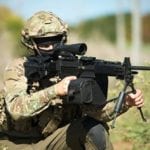 Weird Stuff
Weird Stuff  Weird Stuff
Weird Stuff  Animals
Animals 10 Inspiring Tales of Horses Being Human
 Mysteries
Mysteries Top 10 Haunting Facts About the Ghost Ship MV Alta
 History
History 10 Surprising Stories About the Texas Rangers
 Humans
Humans 10 Philosophers Who Were Driven Mad by Their Own Theories
 Miscellaneous
Miscellaneous 10 Video-Game-Worthy Weapons and Armors from History
 Weird Stuff
Weird Stuff 10 Psychics Who Accurately Predicted Wartime Events
 The Arts
The Arts 10 Pieces of Art Inspired by a Broken Heart
 Health
Health 10 Science Fiction-Sounding New Medical Treatments
 History
History 10 Surprising Facts About the Father of Submarine Warfare
 Weird Stuff
Weird Stuff 10 Times Real Laws Were Based on Bizarre Hypotheticals
 Animals
Animals 10 Inspiring Tales of Horses Being Human
 Mysteries
Mysteries Top 10 Haunting Facts About the Ghost Ship MV Alta
Who's Behind Listverse?

Jamie Frater
Head Editor
Jamie founded Listverse due to an insatiable desire to share fascinating, obscure, and bizarre facts. He has been a guest speaker on numerous national radio and television stations and is a five time published author.
More About Us History
History 10 Surprising Stories About the Texas Rangers
 Humans
Humans 10 Philosophers Who Were Driven Mad by Their Own Theories
 Miscellaneous
Miscellaneous 10 Video-Game-Worthy Weapons and Armors from History
 Weird Stuff
Weird Stuff 10 Psychics Who Accurately Predicted Wartime Events
 The Arts
The Arts 10 Pieces of Art Inspired by a Broken Heart
 Health
Health 10 Science Fiction-Sounding New Medical Treatments
 History
History 10 Surprising Facts About the Father of Submarine Warfare
10 Arguments Against Gun Control
This list serves as a rebuttal of the Listverse list “10 Arguments for Gun Control” by Morris M. This list is not intended to incite controversy, but to foster an even-sided debate. The issue of gun control is global, but since it is most controversial in the United States of America, that nation is referred to most in the following entries.
The US Constitution’s Second Amendment reads: “A well regulated Militia, being necessary to the security of a free State, the right of the people to keep and bear Arms, shall not be infringed.”
10 There Is Murder In The UK
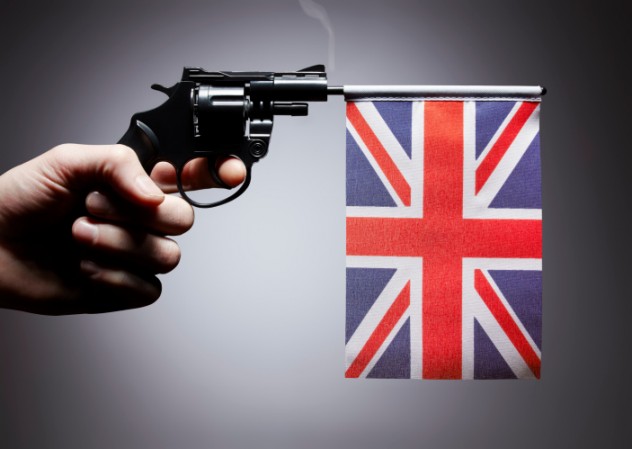
Almost all handguns are banned from civilian possession, ownership, purchase, or sale in the United Kingdom as a result of the Second Firearms Act of 1997. This was in response to the Dunblane Massacre, in which 43-year-old Thomas Hamilton walked into an elementary school and shot dead 16 children, aged six or younger, and one teacher before killing himself. He used four handguns.
Now that modern handguns are no longer legal to have in the UK, let us take a look at some murder rates. The rate for intentional homicide in the UK in 1996—the year of the Dunblane Massacre—was 1.12 per 100,000. It was 1.24 in 1997, when the Firearms Act went into effect, and 1.43 in 1998. The rate rose to a peak of 2.1 in 2002 and has fallen since to 1.23 as of 2010. These numbers have, however, been called into question due to possible under-reporting of violent crimes in the UK.
It cannot be denied that the rate of homicides via guns has fallen dramatically since Dunblane, but the rate of murders has gone up. To say these higher numbers are the result of fewer people able to arm themselves for defense is drastically jumping to a conclusion, but the fact does remain that more people are killing each other in the UK today than when guns were legal to have. Even the police are almost all armed with tasers instead, so handguns are very hard to come by. All the numbers are higher in the US, of course, where there are more people, and there have been no more school shootings in the UK since Dunblane.
But in 2005, there were 765 intentional murders in the UK and most of these were committed with knives. Blunt objects follow, then strangulation, fire, and poison. Banning guns has halted rampage shootings, but it does not address the issue of people killing each other. In the US, the number of intentional homicides in 2004 was 10,654—a number that would have been much lower without access to guns, but still terribly high. Opponents of gun control are always quick to question how many victims of knives, clubs, and strangulation would be alive if they had had a gun.
9 Literary Infallibility
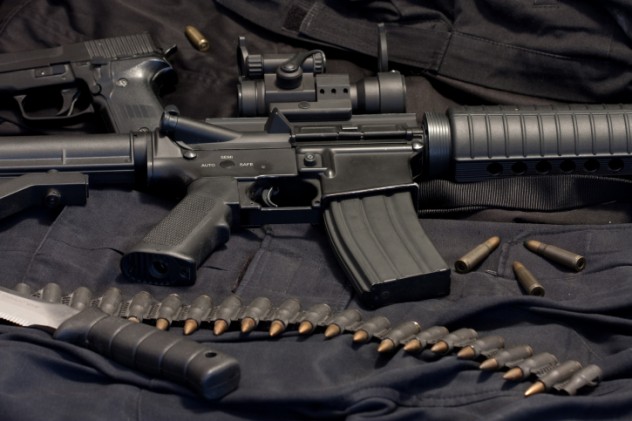
Thomas Jefferson once wrote “Our liberty depends on the freedom of the press, and that cannot be limited without being lost.” Gun enthusiasts often couple this with a quote from Ben Franklin, “Democracy is two wolves and a lamb voting on what to have for lunch. Liberty is a well-armed lamb contesting the vote.”
Unfortunately, Franklin never said that. It was probably written by someone on the Internet, who then tacked his name onto it. But Jefferson’s premise of not limiting the freedom of the press can extend to any freedom. Right now, American legislators are up in arms, if you’ll pardon the pun, over the question of whether to limit some firearms’ ammunition capacities. Proponents cite the only obvious use for an assault rifle—killing people—and defend ammunition limitations as a compromise that will save lives. Opponents maintain that a single life lost due to some maniac with a gun is just as excessive as 30.
The issue of fully automatic firearms has been a hotbed for a long time. In some states, they are legal for civilians, provided that an extra fee is paid. In North Carolina, a fully automatic M2HB .50 Browning heavy machine gun is perfectly legal to use as a home defense weapon or for hunting. This is because that state considers any limitation of guns to be unconstitutional. California does not agree. In that state, no semiautomatic firearm may contain more than 10 rounds at any time. Assault rifles are completely banned. There are some federal limits: no caliber is permissible larger than .50 unless a special and expensive license is obtained and cannons are legal to own but not to fire with real ammunition.
The debates will go on for a very long time, and most of them center on the Constitution’s wording of the Second Amendment. How should we define “a well-regulated militia”? Proponents of gun control claim this should entail proper training. Opponents claim that almost all gun owners train themselves in their free time. They further claim that, should any affront be made to the Second Amendment, those who want to control guns will no longer have any line to cross. They will interpret as they see fit any word or phrase of any Amendment in order to limit more and more rights until, in this case, all guns are banned from civilian use.
8 The Civilian Need For Assault Rifles
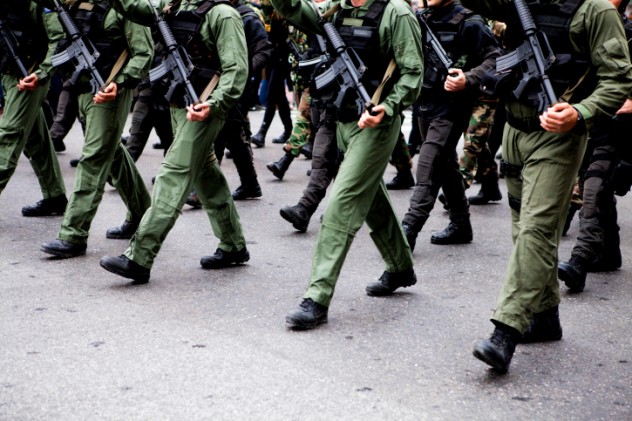
An assault rifle is any weapon which fires high-powered rifle rounds rather than pistol rounds, semi or fully automatically. The weapon reloads each round on its own—all you have to do is pull the trigger again and again. It is true that these weapons were invented for the purpose of warfare, not hunting, though they can be used for either. Proponents of even limited gun control maintain that, if nothing else is done, assault rifles should have magazines of no more than 10 rounds at a time. The argument typically brought out in defense of this position claims that in any self-defense scenario, assault rifles are overkill.
Gun control opponents, however, have long argued that the Second Amendment was put in place not just for ordinary home defense against burglars but specifically to guarantee that the nation could never be overcome by any military power foreign or domestic. If the five branches of the US military were beaten by, say, a nuclear holocaust, the only national defense left would be the civilians themselves. Any subsequent military invasion—probably armed with AK-47 variants—would find it very easy to overrun civilians armed only with lever, bolt, and pump action weapons.
7 Welcome To Texas
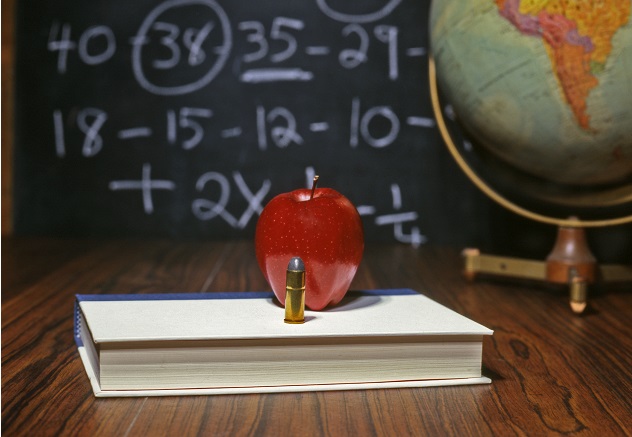
The first modern school shooting occurred on August 1, 1966 and deservedly made national headlines because no one had ever heard of such diabolical insanity. If you have a problem with your boss, you might get mad and shoot him, but sniping innocent random strangers from up to 400 yards for 90 minutes somehow makes even less sense. Whitman’s tower rampage on the University of Austin was not the first school shooting in the sense of a single maniac killing indiscriminately, but it was possibly the first to push the notion into the public eye. It was a direct cause of the institution of SWAT teams among city police forces around the nation. There were none before this incident, and the Austin police found themselves woefully outgunned at the outset.
They were considerably aided, in Ramiro Martinez’s opinion, by several dozen students and passersby who did not take cover, but instead ran to their vehicles and brought back hunting rifles. They then took cover alongside police officers and opened fire on the observation deck, forcing Whitman to take cover and fire less often and less accurately. Martinez was one of the three officers who entered the tower and killed Whitman, and he thanked the civilians for their assistance. Whitman would certainly have killed many more than 12 from the 28th story observation deck had he not been harried by the civilians’ return fire.
6 It Didn’t Work For Germany
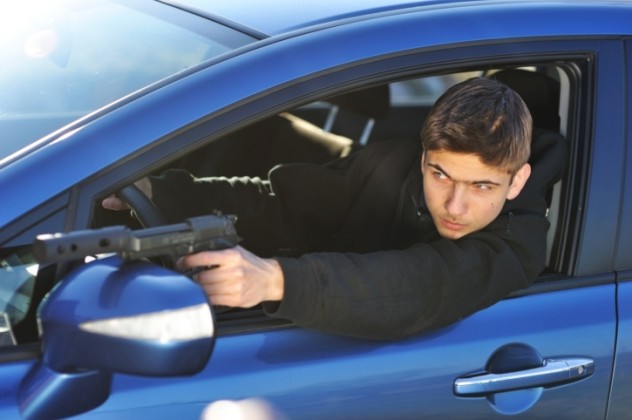
On March 10, 2009, 28-year-old Michael McClendon shot 10 people dead in a spree that covered three counties of Alabama. Gun control was immediately revived in national debates, primarily because he used two assault rifles for most of the rampage. He also had a shotgun and a pistol. McClendon had left a suicide note in which he made it clear that he despondent and enraged over his dead-end life. He began the spree by shooting his own mother, all three of her dogs, and burning down her house. He then drove down the highway shooting random people from his vehicle.
The gun control debate did not reach fever pitch, however, until a German high school student initiated a very similar rampage the next day in Winnenden, Baden-Wurttemberg, in southwestern Germany. Seventeen-year-old Timothy Kretschmer began at Albertville-Realschule, where he murdered 12 people, most of them women, then carjacked Igor Wolf and forced him to drive Kretschmer to the town of Wendlingen. While in the backseat, Kretschmer reloaded his magazines and answered Wolf’s question of why he had done it. “For fun. Because it’s fun.” He ordered Wolf off the road near a car dealership and ran inside, murdered two more people, and then shot it out with the police, wounding two and being wounded in both legs. He opened fire on every random person he could see, then shot himself.
He killed 15 and wounded nine, all with a single 9mm pistol. This was his father’s gun, since he was too young to own one, and it was the only gun his father had not locked in a safe. He had illegally kept it out and loaded in case of burglary. This is not illegal in the US. Here, we see that a child, who should not have been able to acquire a gun, did so in a nation with extremely strict laws on gun control.
5 Gun Control Equals Absolute Despotism
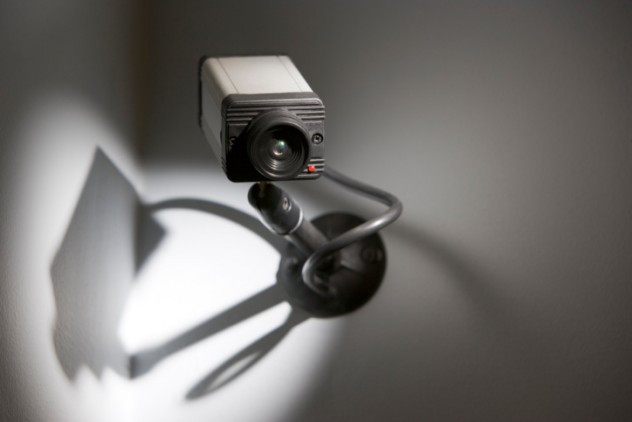
Of all arguments against controlling guns, this one crystallizes everything the ravenous pro-gun crowd has had to say over the years. Most Americans do not trust their government, or more properly, the people who hold the highest positions in it. This was the feeling long before Edward Snowden leaked proof of the government spying illegally on its own citizens and nations around the world. Snowden deemed this too similar to “Big Brother,” as Orwell calls it, but the US government not only disagreed with him, it even defended what it was doing as not in any way criminal, though its own law books clearly differ. Snowden is not without supporters. Twitter has erected security firewalls to guard against NSA spying, and Google, Facebook, and Tumblr have followed suit.
Pro-gun citizens consider their guns the same protection. They arm themselves for the possibility of government agents taking away their rights one by one until they live in a police state in which the government is able to do anything it wants because the civilian populace is unarmed and cannot resist. In these terms, any gun control is viewed as a threat to liberty, and though the Constitution guarantees rights, it does not enforce anything. Guns do.
The Snowden fiasco in particular brought the rampant and frighteningly amoral dishonesty of the federal government back once again to the front of global debate, since America had been spying on China, France, Germany, and even Great Britain against their wishes. The pro-gun American citizens have seized on this embarrassment as yet more proof that the government is out to take away its citizens’ rights, as many as possible until democracy is gone and tyranny is in place. Tthe only truly effective protection of American citizens’ rights to freedom of speech, press, religion, and others are their guns.
4 Rampage Shooters Like Soft Targets
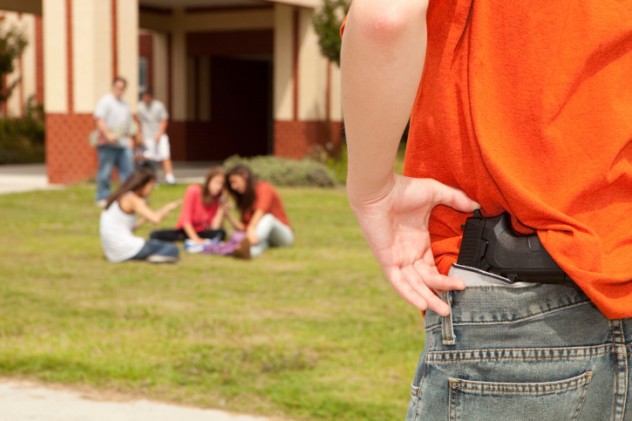
If rampage killers are so depressed that they intend to kill themselves afterward, then why hasn’t anyone whipped out an assault rifle and attempted to kill people inside the US Bullion Depository near Fort Knox? Because breaking into the White House would be a lot easier. Do these shooters fear the firepower lurking around the gold? Not if they want to die, but what they do fear is not killing a lot of people beforehand. They have a rage in them, and it appears to be always the same. Motive or not, they want to exact revenge. The more dead, the merrier. The media, of course, is largely to blame for turning any shooting incident into a circus. Presently, a lovers’ spat that boils over in public will make brief national headlines as a possible rampage scene.
The James Holmeses, the Cho Seung-huis, and Adam Lanzas are the sort who want to one-up the last massacre, and this can’t be done in a bank. The police are on the lookout for the banks and there aren’t enough people anyway. It can’t be done at the White House or a police station, but malls, schools, ordinary workplaces, and churches are all soft and rich targets because they contain many people and few of them are armed.
Suppose there were a guarantee that everyone in a church on Sunday morning were armed to the teeth—pistols, shotguns, and assault rifles, and more importantly, that they were all trained to fight back. Even the most desperately depressed rage-a-holic would pick a different target. The Amarillo school district in the good ol’ state of Texas has gone to the extreme of arming its entire faculty and staff as a warning to would-be maniacs. This means the teachers, janitors, groundskeepers, and secretaries all have guns on their person.
3 The Eighteenth Amendment
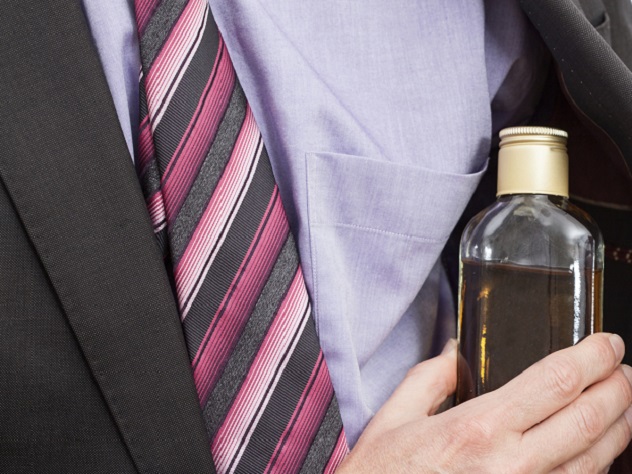
This amendment prohibited the production, transport, and sale of alcohol within the United States of America. It was a result of the Temperance Movement. Most of the politicians in Washington, DC strongly supported the imposition of the ban, but when it went into effect on January 17, 1920, the public responded in a way that neither the temperance movement nor the politicians had expected—few people heeded the criminalization, and those who had been manufacturing alcohol continued doing so regardless of the law. Everyone seemed haughtily recalcitrant and alcohol use flourished even more than before. The police around the country were woefully ineffective in curbing its production, sale, or consumption.
Career criminals like Al Capone became extremely rich by gaining control over the importation to entire cities. Those too afraid of the police resorted to making their own booze at home, and this resulted in many deaths from poisoning.
Replace every reference to alcohol above with a reference to guns and you have the most assured aftermath of a similar prohibition on guns—except in this scenario, the crimes involved are much deadlier. The Al Capones who rise up will attempt to gain control over a city’s illegal importation of guns, and there will be street violence worse than that of the most dangerous areas of Chicago today.
The public outcry leading up to the national ban might not cause a nationwide uprising. Such a disaster can only be conjectured as alternate history fiction, but if the government enforced the ban by raiding homes and businesses, there would certainly be small-scale uprisings that easily spread. Martial law would have to be imposed in some large cities, especially in Texas. Texas might actually make good on its common threat to secede, since it does retain a provision in its state constitution which permits this. There would be civil war, but with much deadlier weapons. The war would probably not be fought in as open a form as the previous Civil War, but those who refuse to relinquish their firearms would engage in guerrilla warfare and splinter cell terrorism. None of this is to say that the US military, if loyal to the ban, could not put down such rebellion to it, but the consequences would be horrific and long-lasting.
2 Laws Do Not Apply To Criminals
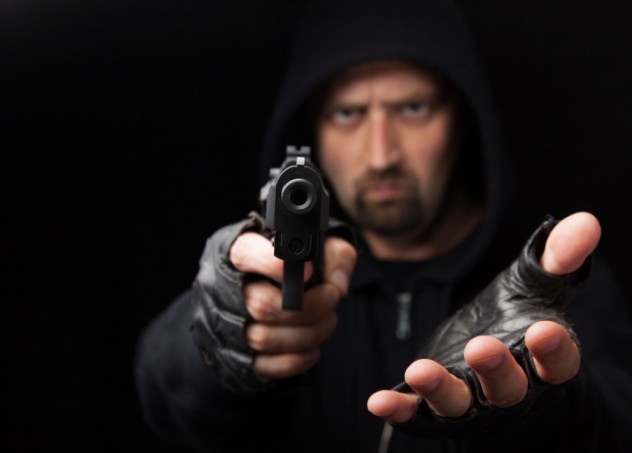
We’ve all heard this one many times, but a point of contention that just won’t go away must be quite convincing to some. Gun laws are all founded on the principle of making a nation safer by limiting its civilian population’s access to guns, but laws against murder and violence do not apply to those who have given up on life and intend to die while killing as many people as they can. Laws against theft do not apply to a person who intends to steal something. The sole thing the criminally-minded care about is not getting caught. Some are reformed in prison, but in large part, those who want to break a law are not going to feel remorse when they are caught. Give them a chance and they will do it again.
From this perspective, it is difficult to fathom the logic of enacting newer, stricter gun laws on an already lawful society. Most of us obey such laws. Sale of guns is forbidden within the city limits of Chicago, an ordinance that went into effect in 2010. For the year 2013, the city’s murder count is 374. There were 432 in 2010 and 500 in 2012. The FBI has named Chicago the nation’s murder capital. Thus, the city ordinance did nothing to reduce its murder rate.
None of this is to imply that in areas of well-armed civilians, the violent crime rate must go down. That is not true. The highest crime rates in 2012 were in the South, where gun ownership is at its highest. But this fact as well corroborates that any imposition of gun control does not address the issue of gun-related crime.
1 Maybe In A Perfect World . . .

Let us disentangle ourselves from the trees and take a look at the forest. Because there is no national gun registry, the exact number of guns in civilian hands in the US cannot be determined, but a conservative estimate places it—as of 2010, when the gun-buying craze was just reaching its peak—at 270 million weapons. This was about 89 guns per 100 people, the most heavily armed civilian population in the world. Yemen was second with 55 per 100, and Switzerland third. As of 2013, Serbia is second.
Another estimate, conducted by Congressional Research in 2012, places the total number of weapons in US civilian hands at 310 million as of 2009. By today, that means almost 1 gun for every single citizen, including infants. What would gun control even mean at this point? Assume this federal law: from 2014 on, no more assault rifles. Those who already own one may keep theirs, but such weapons will disappear from gun stores and pawn shops. Have we controlled much of anything? There are still at least 3 million assault rifles out there.
In a perfect world, gun control would mean going house to house throughout the nation and taking away every single firearm, including muzzle loaders. That would be impossible. Regardless of its constitutionality, gun owners would either fight back until there were a nationwide civil war or simply hide their weapons and claim they have none. Since most of those in the US are unregistered, no one knows who has what. Owners could always claim they destroyed those that are registered.
Thus, to debate gun control is a futile exercise. They cannot be controlled—not anymore. The continuation of buying and selling them cannot make the situation any worse because criminals will never again have to go far to find one.
FlameHorse is a writer for Listverse.








